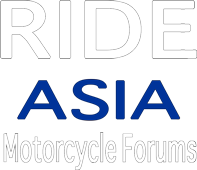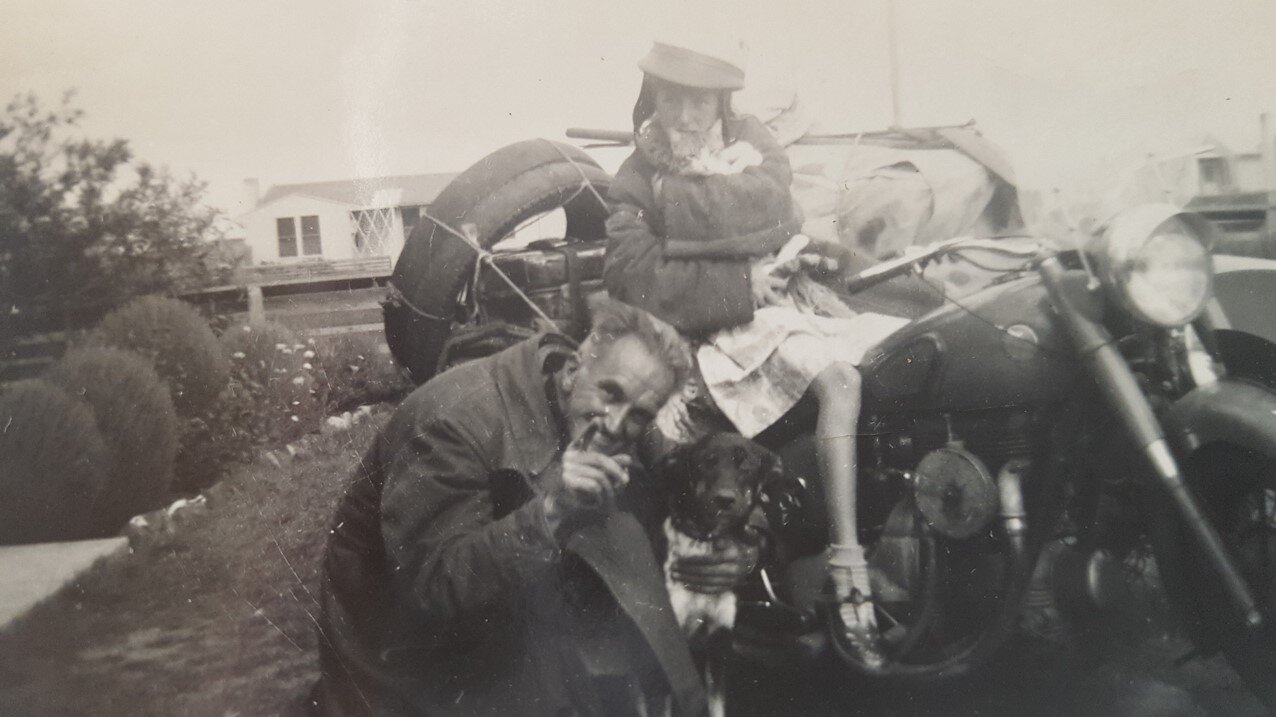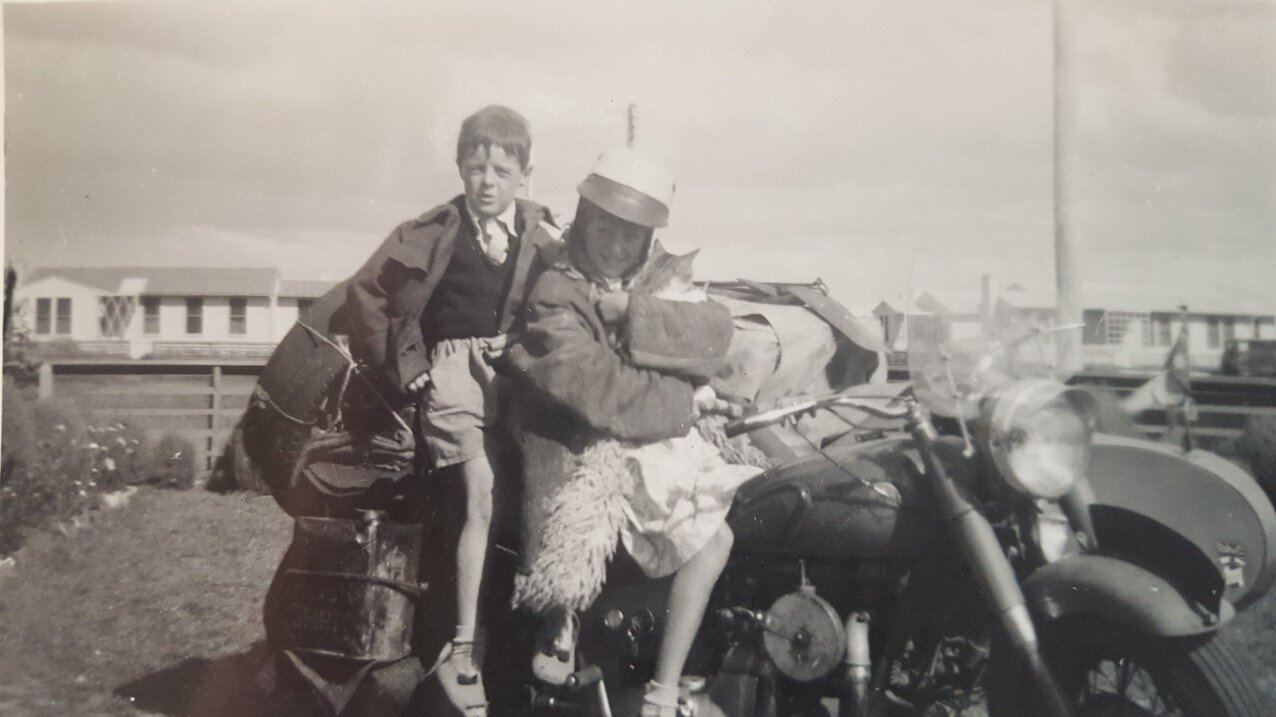I'm back tracking to the early part of the trip. This is an account of crossing the border from Portuguese Timor to Indonesian Timor. "The past is a foreign country. They do things differently there."
"Travel was an adventure in the 1970s. I have vivid memories of a trip from Baucau to Kupang early in 1973. The road from Baucau to Dili had been damaged by the monsoon, so we had to wait a couple of days for a barge.
When we got word that it had arrived we checked out of Peter Mu's grandly named "Pearl of the Orient Hotel" and traipsed down to the beach.
When we got there the barge was loaded up with a Komatsu excavator, a horse, a couple of trucks and a great assortment of cargo and passengers. By the time loading was completed, the tide had dropped and so we were stuck on the sand. For the next half hour, engine screaming, we scribed a 30° arc, left to right, then back again, in a furious battle to free ourselves from the grip of the sands.
Eventually, in the late afternoon with the aid of the rising tide, the Comoro freed itself and we steamed westwards, parallel to the coast, over a millpond sea.
Darkness fell. Stars appeared. The engine hummed a comforting tune to match the steady swish of the waves against the hull. The unseen shore announced its presence when we spotted occasional cooking fires on the beach.
We docked in Dili before dawn feeling pretty wasted - a night spent atop a stack of boxes and assorted sacks had taken its toll.
We walked to the Hippie Hilton and crashed. Little had changed since my first stay there in 1970 - the concrete floor was still as hard as concrete. But sea was still the bluest blue you could ever wish for and the sand it lapped was powdery white.
We'd got word on the trip over that the "Comoro" would sail "in a couple of days" for Bategadè, near the border with West Timor. Dili was an interesting place to hang out. It was small, clean and unhurried. There was little traffic- most vehicles were Portuguese army Jeeps and trucks. Private cars and motorcycles were a rarity. My impression was that the people were very poor. Vegetables in the market were arranged in handfuls. Scales were not in use. People were very shy. I can't recall speaking English or being approached by anyone. I got the impression that the Portuguese were firmly in control. Shops were mainly Chinese operated. There was a Taiwanese Embassy and Australia had an Honoury Consul.
I remember going to a restaurant for dinner with an American. Our food came out. After a couple of minutes the American alerted my attention to something moving on his plate - maggots! This was the first and only time I've ever seen such a thing and I've travelled a lot since 1970..The restauranter was very apologetic. The American was quite chilled about it all. We received a bottle of red on the house and left in good humour, no damage done.
We left Dili for Bategadè in the late afternoon. I guessed that night travel was a sop to passengers comfort as there were no cabins and no shelter on the open deck to shade us from the relentless sun.
The passage was calm and uneventful..We did call it at one tiny hamlet so an old man, and an extremely beautiful young woman with ebony skin and the blackest of black thick, wavy hair - his granddaughter maybe - could disembark.
Bategadè is just a dot on the map. There's a centuries old Portuguese fort, replete with ancient canons staring out to sea. We quickly learnt that the Posto Immigracion was up in the hills, at Balibo a twenty minute Jeep ride away.
Twelve of us piled in and on a battered Land Rover and our Chinese driver skilfully piloted up the rocky, winding track.
Balibo was a very pretty hamlet. There were lots of Bougainvillea in bloom. We mounted the steps to the office. A very stern Portuguese official met us. An Englishman took some photos and promptly had his camera seized and the film exposed. An Aussie, named Bill, managed to steal a rubber entry stamp from an unlocked glass cabinet. "It might come in handy one day."
We paid off the driver back in Bategadè and then purchased food and filled our water bottles for the next leg of the journey - a 20km walk to the border and then on to Atapupu, the first Indonesian hamlet in West Timor.
The sandy track out of Bategadè wound through the scrub. It was past midday. Hot as. We trudged on hoping for some shade ahead, or, even better, a rendezvous with the beach and a swim. After a couple of hours our prayers were answered and we emerged from.the scrub alongside a pristine beach. Many of us stripped off and went for a swim. There were flying fish skimming across the water like demented darts: it was magical to see them leaping and landing, disturbing the repose of the resting sea.
We got going again and it wasn't long before we found ourselves in a coconut plantation. Some kids appeared. They kindly shinned up the palms and dropped a few coconuts for us to enjoy - a very noble gesture and much appreciated.
We made it into Atapupu late in the day. The sole policeman confiscated our passports and locked them away. We managed to work out that a truck would come in the morning to take us to Atambua, a fair sized town where there were hotels and where there was transport to take us the the capital city of Nusa Tenggara Timor province - Kupang. In the meantime, we were welcome to sleep wherever we could find a place to rest our heads
We were all very hungry after the long walk. The only shop sold cucumbers, bananas, tomatoes, sweet and dry biscuits and the woman owner offered to boil the water for coffee. She did a very brisk trade that afternoon!
I will finish this account later.
As promised here is the second part of this tale.
After filling our stomachs we changed a few American dollars with the shopkeeper, albeit at a rather poor rate. We then returned to the wide verandah of the police station to bed down for the night. Not long after, a couple of German lads, who'd been intending to sleep on the beach, returned. They recounted that soon after they'd unrolled a ground sheet and lay down, some people came up. They began gesticulating with their outstretched arms mimicking the jaws of a crocodile jaws opening and snapping shut. The locals were adamant that the dangers were very real.
We awoke with the roosters at first light. Our surly host, the policeman, looked a little worse for wear; I imagined that I'd look the same had a mirror been available.
The truck's arrival, we were told, was "not long". Now, that's a term whose Indonesian equivalent is "jam karet" - "rubber time". In other words "it comes when it comes". The German guys didn't want to hang around and asked for their passports. The answer was an aggressive "No! You go truck!" It was obvious that the cop was getting a kick back per passenger so no one was going to Atambua on foot.
A beaten up tipper arrived mid-morning and we climbed about - from memory there were about 12 of us. The sandy track was in good condition and after an hour we were dropped at a hotel in Atambua. We were told that "a truck will leave for Kupang tomorrow morning."
The hotel was as expected - basic. But let's get real here. When you're travelling, a hotel is a place to shower, rest and sleep. If it's clean, has water, a bed, a door that locks, a working toilet and a fan then all boxes are ticked.
As promised a truck arrived next morning. It was loaded with 44 gallon drums, cardboard boxes and crates. We climbed aboard and around 7.30 we were off. We had no idea how long the trip would take. The straight line distance looked to be a couple of hundred kilometres. We had entered the time zone known as "anyone's guess".
The track wound through gently undulating terrain - savannah country where we spotted occasional groups of Timor ponies. At other times we traversed areas of forest and had to duck overhanging foliage. The two driver's assistants kept a sharp eye out and were kept busy ensuring our heads remained attached to our bodies.
Each river crossing, and rhere were plenty of them, was a major obstacle. There were no bridges, so we'd enter the mostly dry river bed via a shallow bank and then slowly grind over the rocky bed to seek an exit on the opposite bank. Our snail pace progress was sometimes witnessed by gangs of macaques who'd come down to the river to drink.
We passed through the occasional small village where we could buy bananas, coconuts, a type of rather juice less orange and biscuits. There were small plantations of corn and every house sported a vegetable garden, an enclosure for pigs and there were always a few goats on the loose. People were very friendly. "Hello Mister" was the standard greeting, regardless of your gender.
The day wore on. Comfort was an illusion that disappeared soon after each change of body position. We re-arranged the cargo to create a small area of floor space where two people could stand up and we took it in turns for the privilege.
We reached Kefamananu, a sizeable town, late in the day and stopped at a warung. We feasted on nasi goreng and strong black coffee. Bliss. Revitalised, our driver signalled the off, and away we went to greet come what may.
Darkness fell like a shroud. The old Chev's headlights were next to useless but there was no traffic to worry about once we left the town centre. About 10pm in the middle of a treed area our driver pulled up. He'd had enough. No longer able to keep his eyes open he answered the call of the Dream Lord, threw a blanket on the ground and slept. We did likewise.
I don't know how long I'd been asleep. I was having a vivid, vivid dream. I was asleep on a road in the jungle and I could hear the sound of an engine getting louder as it got closer. I was trying to get up but couldn't move. When the noise reached an ear splitting roar, I found myself leaping to my feet and running wildly into the black unknown. I stumbled and fell. It was then that I saw the lights of the truck. It was struggling up a steep incline in low gear. How strange the mind is. The reality registered by my sub-conscious, and my ears, combined to manufacture a terrifying portent of an early death. At least that's how I interpret the event..Nevertheless, I felt greatly relieved as I watched the red glow of the truck's tail lights disappear around the bend.
I looked at my watch..3.00am. I lay down again and after a while fell asleep. We were woken by the driver and his assistants. The sky was just beginning to lighten. My Indonesian was good enough to work out that we would be stopping for breakfast at his house on the outskirts of Soe - "tidak jauh" (not far away).
We pulled up at a small concrete house with a verandah out front. His wife and two teenage daughters greeted us and informed that we'd be getting pisang goreng (fried bananas) and coffee for breakfast.
Ten minutes later, the first plates arrived. Pisang emas (gold bananas) clothed in a golden brown batter served piping hot and washed down with strong black coffee. What a life-saving way to start the day.
There was a well out the back so whoever wanted a wash was invited to partake. The water was deliciously cool. Washing away the patina of grime that encased me was pure ecstacy.
We got moving again at 9.00am. There were two big rivers to cross and many climbs, descents and twists in the low ranges we traversed. The further west we went, the more villages and bitumen we encountered. Our progress, at times, seemed rapid. But then we got a rear blow out which took a while to replace.
We reached Kupang late in the day and pulled up outside the Losmen Fatelau which was still under construction It was somehow connected to Zamrud Airlines who had just begun operating a WW2 DC3 from Kupang to Bali, piloted by a colourful American, Jack Rafe. He gets a mention in "Beyond the Blue Horizon." Alexander Frater's excellent travel epic whereby he traced the route of the first commercial flight from London to Australia pioneered by British Empire Airways in 1929. That journey took twelve days!
We were greeted at the Fatelau by Winston Maliboro who, when I met him in Surabaya in 1970, was riding a becak - a bicycle trishaw. But that's a story for another time.
I am still actively involved in motorcycle travel between Lombok and West Timor and spend months each year riding the highways and byways of that wonderful country.
If you have any recollections of travel, particularly Indonesian travel in the early days, please reach out.
BTW, that trip took the best part of 36 hours. Today it takes less than seven.








